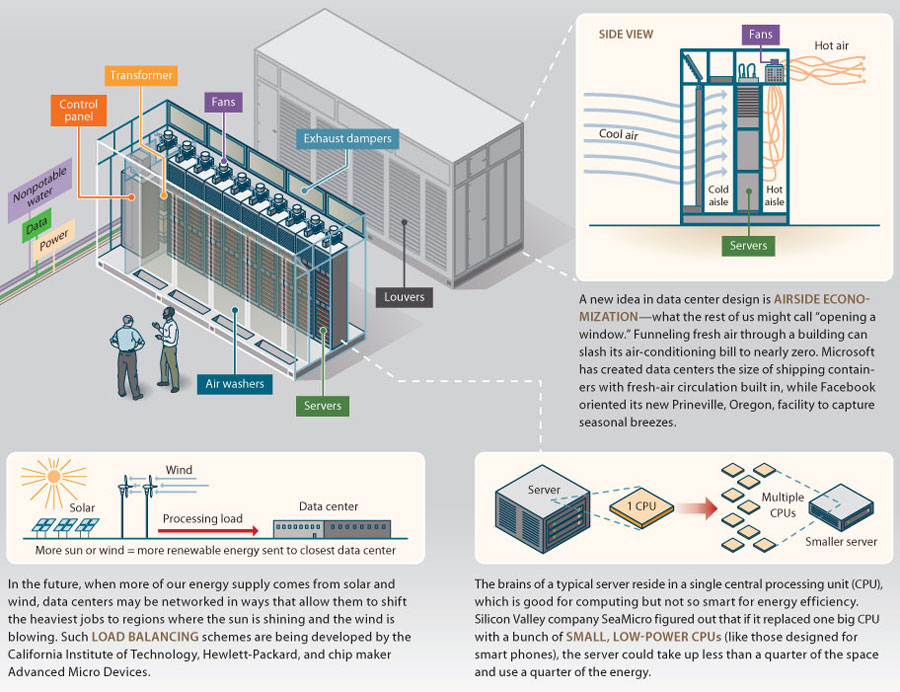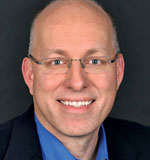sierraclub.org - sierra magazine - nov/dec 2011 - innovate: lean, green data machines
Hidden behind every Google search and Facebook update is an energy-guzzling data center. As the globe's computing migrates to "the cloud," the electricity-powered facilities that do all that number crunching will generate more and more heat. Massive air conditioners and water chillers are required to cool these centers, which might house tens of thousands of servers in a building the size of 10 football fields. Creating this artificial Arctic can use nearly as much energy as the servers themselves, which explains why data center energy use grew by 56 percent between 2005 and 2010.
Today, such facilities consume about 2 percent of America's electricity. Compounding the problem is that to keep costs low, companies often locate their data operations in regions that use cheap and polluting coal-fired electricity. Now, some sharp minds are trying to make the centers smaller, cooler, more efficient, and able to "friend" cleaner power sources like solar and wind.

Infographic: Brian Kaas
THE OUTDOOR FIX
 Frustration over escalating energy bills made Christian Belady toss some computer servers into a tent in 2007 to tough out the Seattle winter. Belady, a data center expert at Microsoft, knew that servers are hardy machines. But the industry engineers who set air-conditioning standards had decreed that data centers operate best between 68 and 77 degrees Fahrenheit—a cautious edict that caused hundreds of megawatts to be wasted on unnecessary cooling all year round. Belady had grown up camping in national parks, and figured that data centers could benefit from fresh air too.
The servers hummed along in their tent for eight months without fail. He posted his results online, they went viral, and in 2009 the engineers changed their guidelines to a more flexible 64 to 81 degrees.
Frustration over escalating energy bills made Christian Belady toss some computer servers into a tent in 2007 to tough out the Seattle winter. Belady, a data center expert at Microsoft, knew that servers are hardy machines. But the industry engineers who set air-conditioning standards had decreed that data centers operate best between 68 and 77 degrees Fahrenheit—a cautious edict that caused hundreds of megawatts to be wasted on unnecessary cooling all year round. Belady had grown up camping in national parks, and figured that data centers could benefit from fresh air too.
The servers hummed along in their tent for eight months without fail. He posted his results online, they went viral, and in 2009 the engineers changed their guidelines to a more flexible 64 to 81 degrees.
This outside-the-building thinking has made Belady a pioneer in the greening of the data center. He is excited about his latest project: transforming the relationship between the power grid, the data center, and the computer user—a relationship fraught with wasted energy. Currently, a utility delivers power through copper lines to the data center, which uses optical fiber lines to exchange data with the customer; power losses occur along the lines and as voltage is stepped up and down along the way. Belady is exploring the idea of co-locating the data center with an energy source—say, a wind farm. Utility companies are intrigued. "The opportunity," Belady says, "is to create a 'handshake' between people who haven't spoken."
—David Ferris
Christian Belady photo courtesy of Microsoft